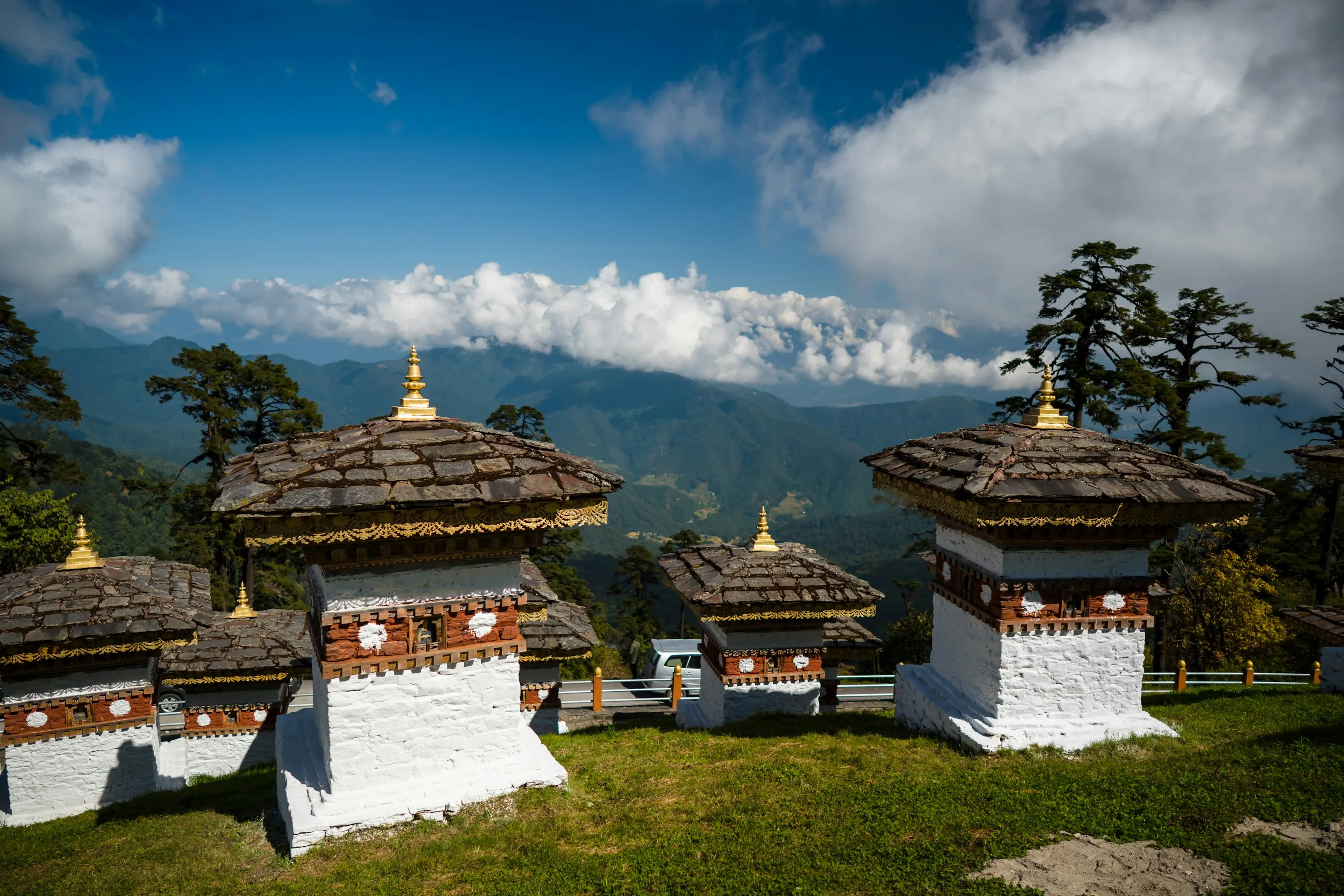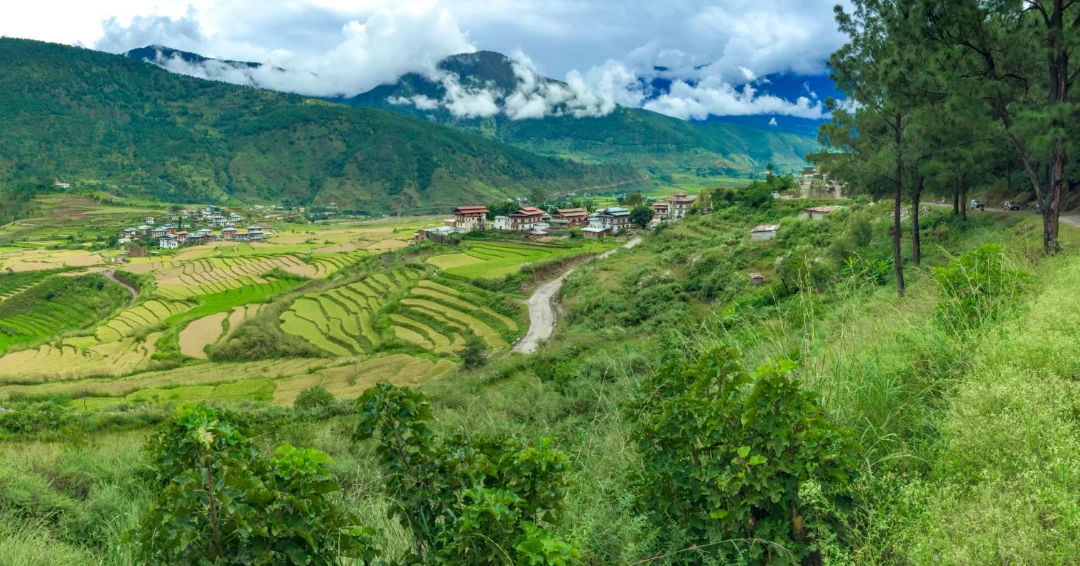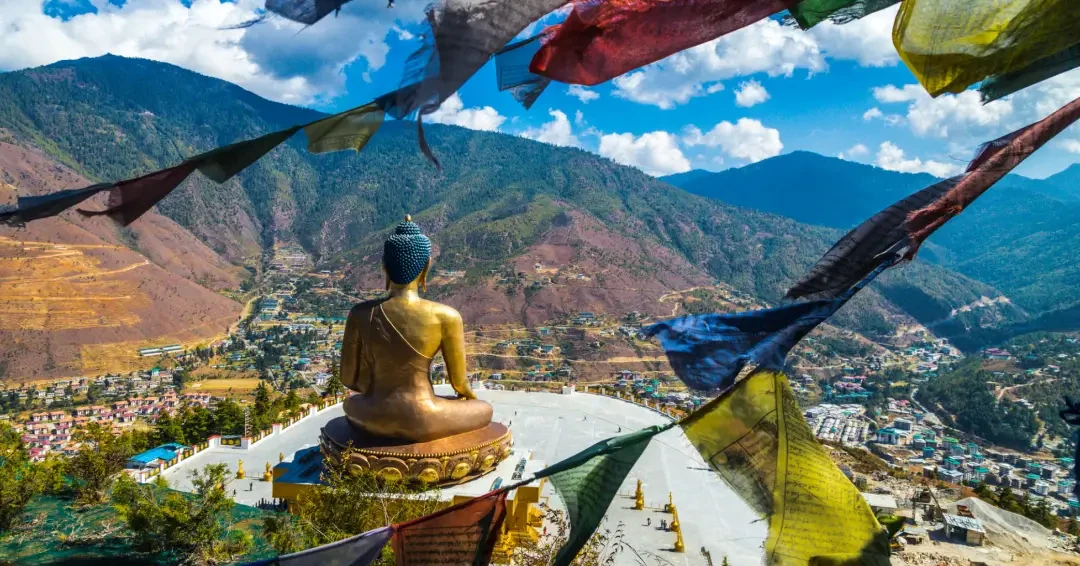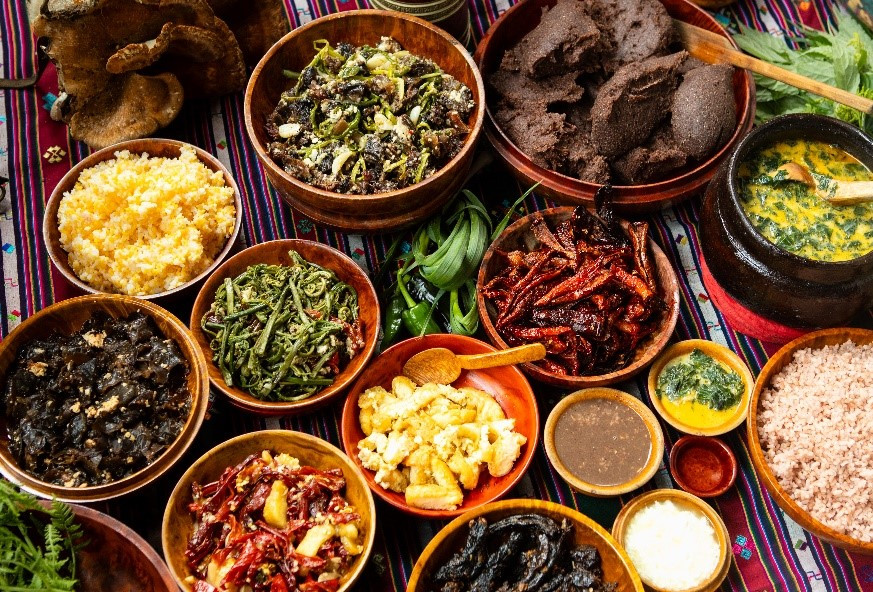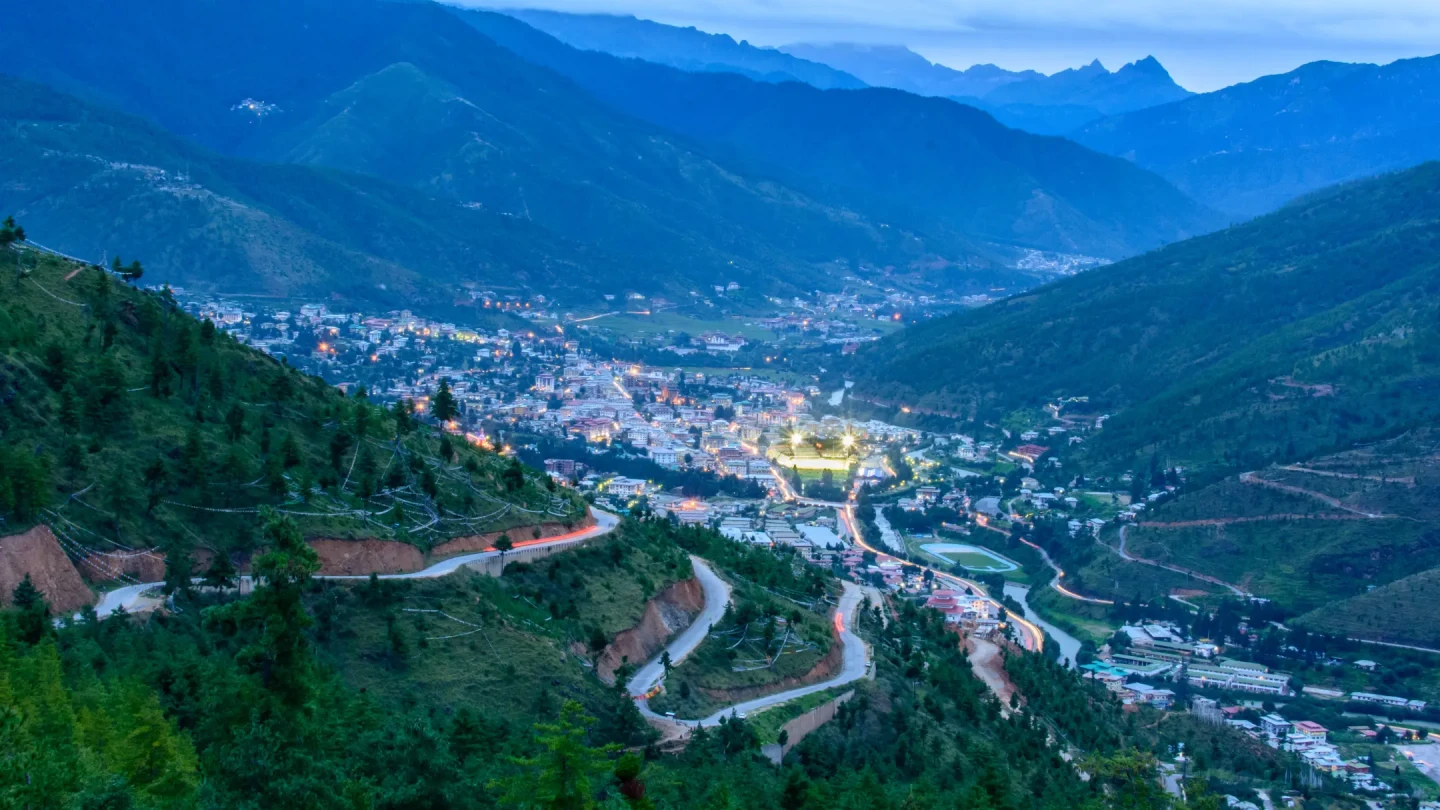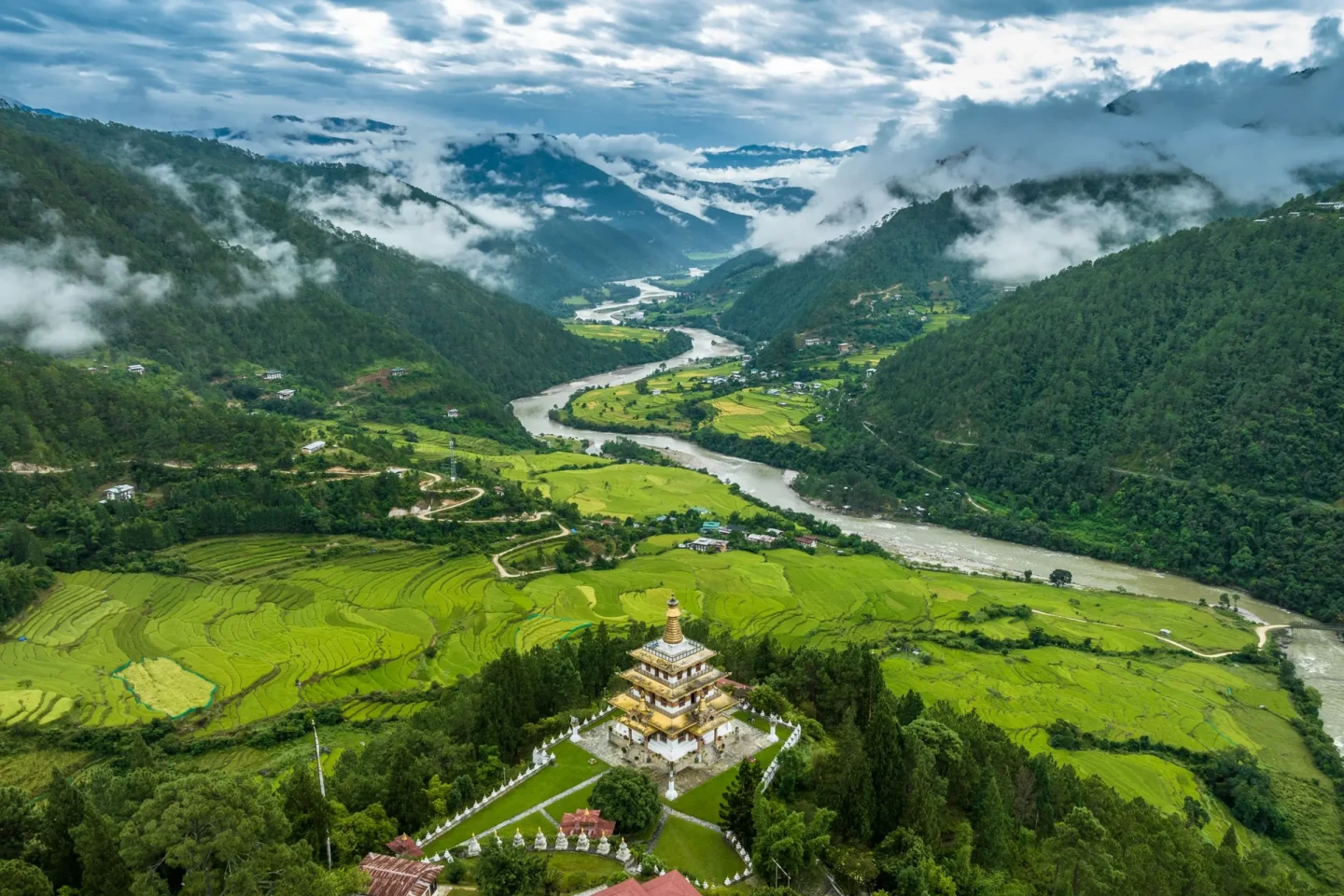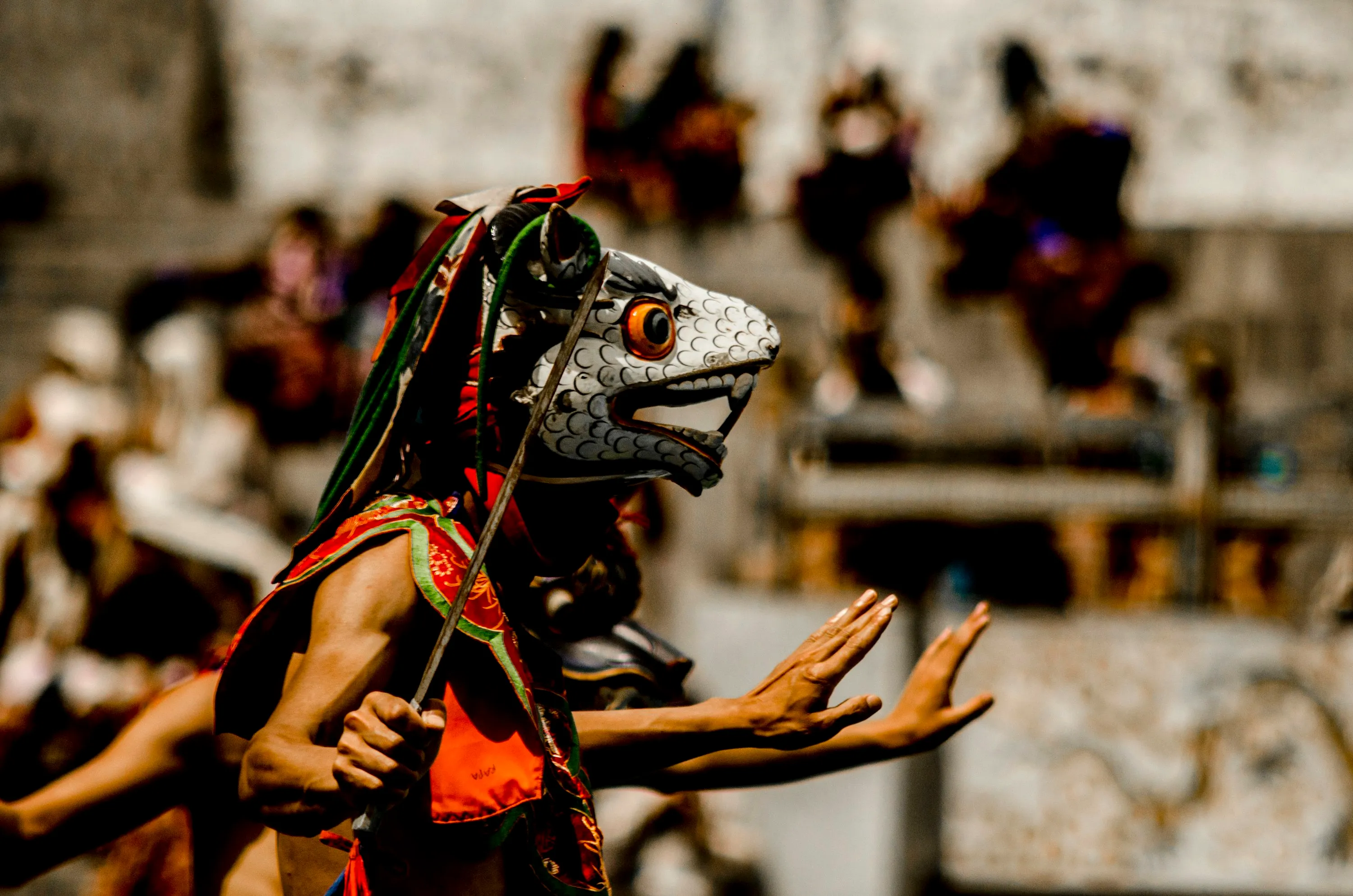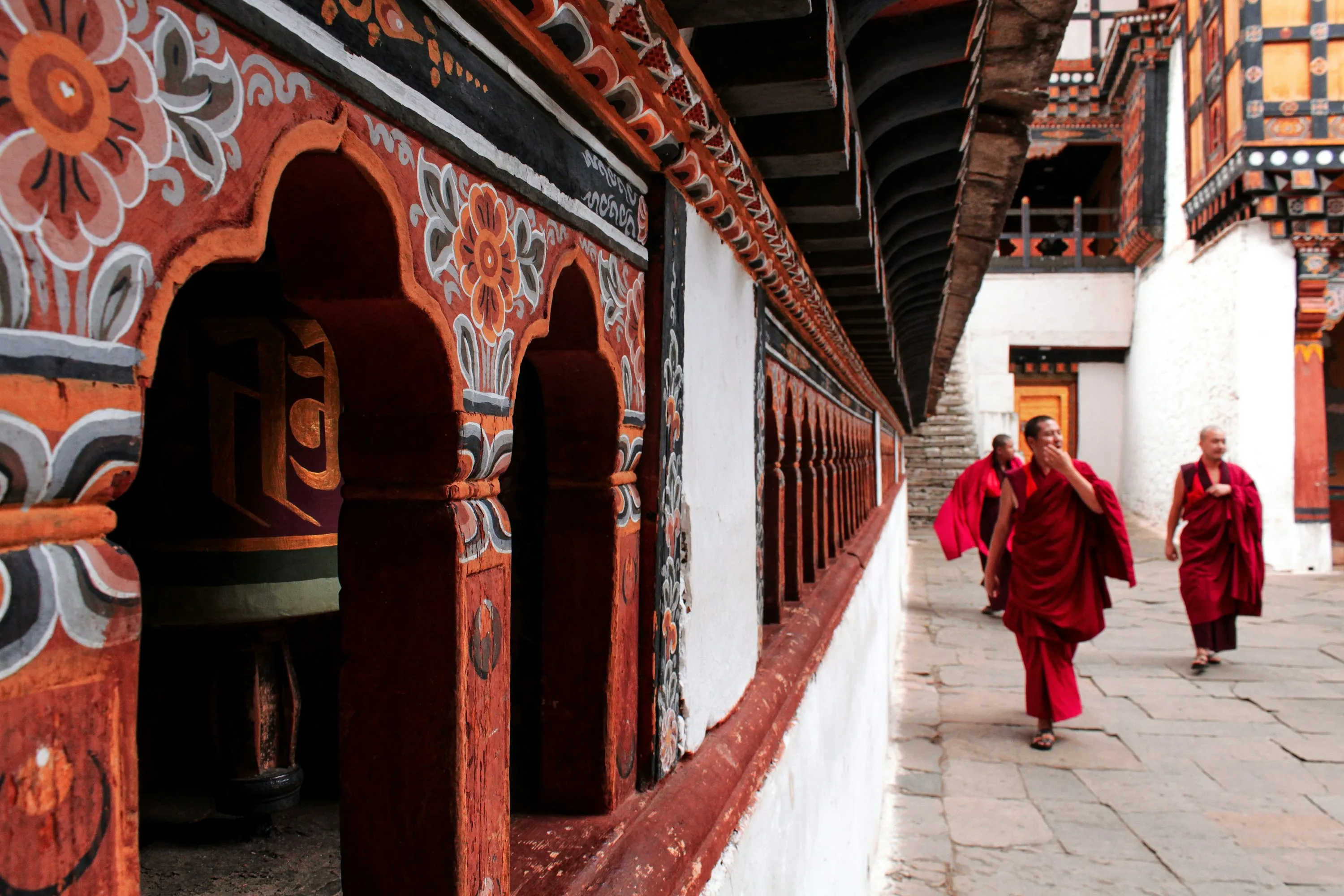Nestled in the eastern Himalayas, Bhutan emerges as a captivating destination that promises an unparalleled blend of natural splendor, profound spirituality, and preserved cultural heritage, making it an ideal escape for Icelandic travelers seeking solace beyond their own rugged landscapes. As an experienced Bhutanese travel consultant, I extend a warm invitation to explore this kingdom, often dubbed the "Land of the Thunder Dragon," where ancient traditions harmoniously coexist with mindful modernity. For Icelanders accustomed to the stark beauty of glaciers, geysers, and volcanic terrains, Bhutan offers a contrasting yet complementary experience: lush valleys, towering peaks, and subtropical forests teeming with biodiversity, all under the watchful eyes of snow-capped mountains reminiscent of Iceland's own dramatic topography. Both nations share a deep commitment to environmental stewardship—Iceland with its renewable energy prowess and Bhutan with its carbon-negative status and constitutional mandate to maintain at least 60 percent forest cover—fostering a mutual appreciation for sustainable living. Diplomatic ties between Iceland and Bhutan, though not extensive, are built on shared values of peace, democracy, and global cooperation, with both countries emphasizing Gross National Happiness (GNH) in Bhutan and high human development indices in Iceland. While Iceland boasts a population of around 370,000 spread across its island expanse, Bhutan's roughly 770,000 inhabitants thrive in a landlocked realm of comparable size, both prioritizing quality of life over rapid industrialization. This guide delves deeply into the essentials for your journey, bridging the cultural and geographical distances to ensure a transformative adventure that resonates with the Icelandic spirit of exploration and resilience.
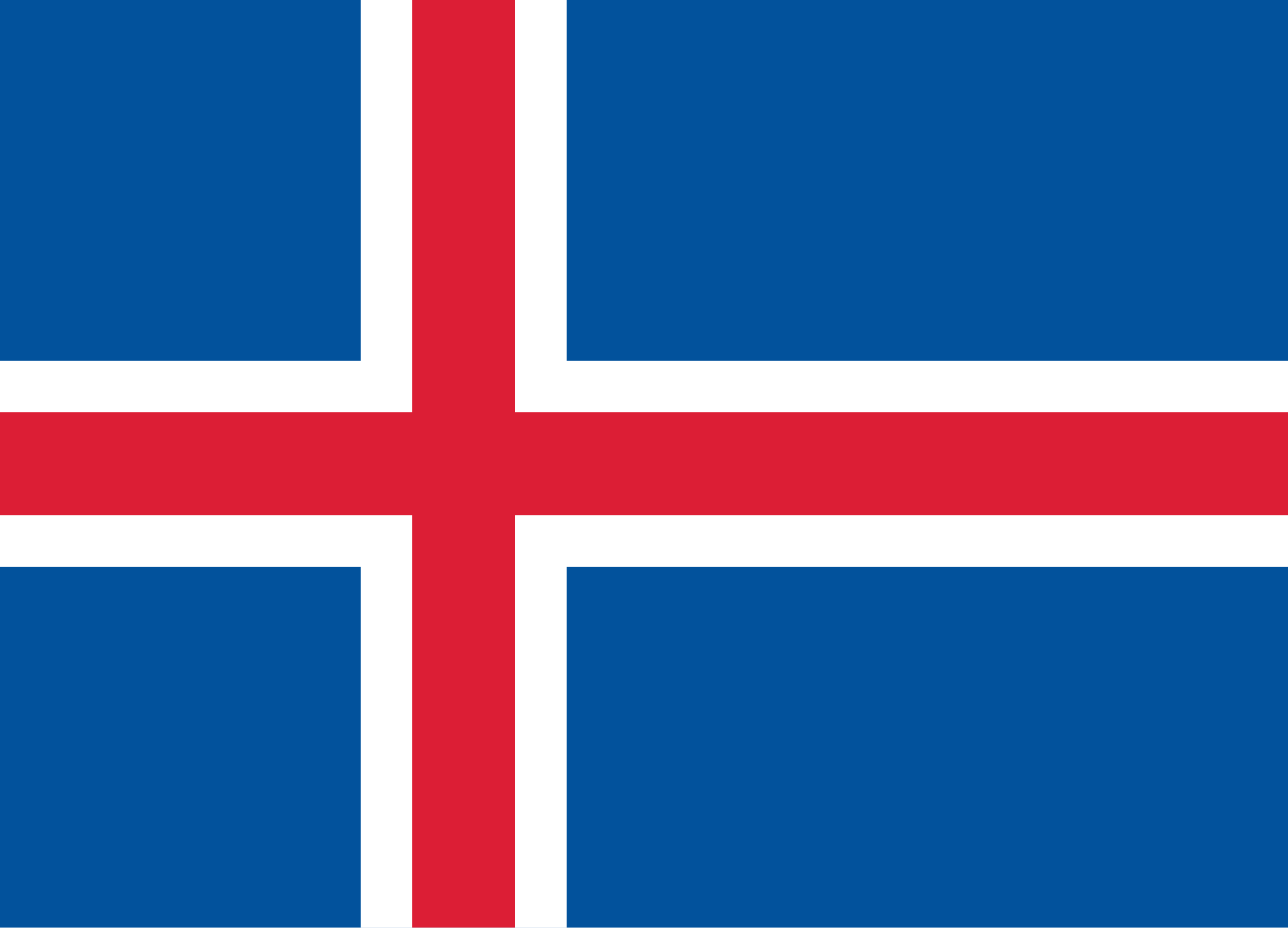
Visa and Entry Requirements
Bhutan's tourism is meticulously regulated to preserve its cultural and environmental integrity, mandating that all foreign visitors, including those from Iceland, arrange their trips through licensed Bhutanese tour operators. This controlled policy ensures sustainable tourism, limiting visitor numbers and channeling proceeds toward national development. For Icelandic tourists, the visa process begins with selecting a reputable tour operator who will handle the application on your behalf, submitting details such as your passport information, travel itinerary, and proof of accommodation. Your passport must be valid for at least six months beyond your planned departure from Bhutan, and you'll need to provide a digital passport photo and a copy of your passport's bio page. Once the tour operator secures approval from the Tourism Council of Bhutan, the visa is issued electronically and stamped upon arrival at Paro International Airport or designated land borders. Payment for the tour, including the Sustainable Development Fee (SDF), is integral to visa approval; the SDF, currently set at USD 100 per person per night for adults (with reductions for children aged 6-12 at USD 50 and exemptions for those under 6), funds free education, healthcare, and environmental conservation across the kingdom. This fee directly influences overall trip pricing, as it is bundled with mandatory inclusions like guided tours, transportation, and meals, ensuring that your visit contributes positively to Bhutan's Gross National Happiness framework. Icelandic travelers should anticipate a seamless process, but it's advisable to book at least two months in advance to accommodate any bureaucratic timelines, allowing ample preparation for this once-in-a-lifetime immersion.
Travel Routes from Iceland to Bhutan
Embarking on a journey from Iceland to Bhutan involves navigating multiple transit points, as there are no direct flights connecting these distant lands. From major Icelandic hubs like Reykjavik's Keflavik International Airport, travelers typically begin with European carriers such as Icelandair or SAS, flying to key gateways like Frankfurt, London, or Copenhagen for onward connections to Asia. From there, options include flights to Delhi in India, Bangkok in Thailand, or Kathmandu in Nepal via airlines like Lufthansa, British Airways, or Qatar Airways, with total travel times ranging from 15 to 25 hours depending on layovers. The final leg to Bhutan is serviced exclusively by Drukair (Royal Bhutan Airlines) or Bhutan Airlines, operating from these transit cities to Paro International Airport, renowned for its challenging approach amid steep Himalayan valleys and limited to specially trained pilots. Paro's airport, one of the world's most demanding due to its high altitude and surrounding terrain, accommodates only daytime landings and is susceptible to weather-related delays, particularly during monsoon seasons when fog or rain can ground flights for hours or days. Icelandic visitors should book flexible tickets and consider buffer days in transit cities to mitigate such disruptions, while also preparing for the thrill of Paro's dramatic descent. Realistic scheduling involves checking Drukair's seasonal timetables, which may offer daily flights from Delhi but less frequent ones from Bangkok, and coordinating with your tour operator to align arrivals with visa clearances, ensuring a smooth entry into Bhutan's serene embrace.
Best Time to Visit and Seasonality
Bhutan's climate unfolds across four distinct seasons, each offering unique experiences that Icelandic travelers, familiar with variable weather, will find both intriguing and manageable. Spring, from March to May, brings mild temperatures averaging 10-20°C in valleys, with blooming rhododendrons and clear skies ideal for trekking and sightseeing, though occasional showers may occur; this period aligns well with Iceland's thawing landscapes, providing a gentle transition for visitors. Summer, June to August, introduces the monsoon, characterized by heavy rains, humidity, and temperatures up to 30°C in lower regions, which can lead to landslides and foggy vistas, yet it nurtures lush greenery and is perfect for those seeking solitude amid fewer crowds. Autumn, September to November, stands out as the prime season with crisp air, blue skies, and temperatures of 5-15°C, coinciding with vibrant festivals like the Thimphu Tshechu, where masked dances and communal celebrations highlight Bhutan's Buddhist heritage. Winter, December to February, delivers cold snaps down to -5°C at higher elevations, with snowfall enhancing the majestic peaks, though passes may close; it's suited for cultural explorations in warmer valleys. For Icelandic tourists accustomed to cool climates and outdoor pursuits, autumn emerges as the optimal time, balancing favorable weather for hikes like the Tiger's Nest ascent, festival immersion, and moderate visitor numbers to avoid overcrowding, while spring offers a floral spectacle akin to Iceland's summer blooms. Planning around these seasons ensures alignment with personal interests, whether spiritual festivals or nature treks, fostering a deeper connection to Bhutan's rhythmic natural cycles.
Money, Costs, and Payment Methods
Navigating finances in Bhutan requires understanding its currency system and practical payment options, tailored to a tourism model that minimizes hassle for visitors like those from Iceland. The official currency is the Bhutanese Ngultrum (BTN), pegged one-to-one with the Indian Rupee (INR), which is also widely accepted; exchange rates fluctuate but are generally favorable when converting from Euros or USD, common in Icelandic holdings. ATMs are available in major towns like Thimphu and Paro, supporting Visa and Mastercard, though rural areas may lack them, so carrying cash in USD or BTN is prudent for smaller transactions. Credit cards are increasingly accepted in hotels and larger shops, but smaller vendors prefer cash, and foreign transaction fees can add up. Tour packages, mandatory for entry, typically encompass accommodations, meals, internal transport, guides, and the SDF, leaving extras like alcoholic beverages, souvenirs, tips (around USD 10-15 per day for guides and drivers), and personal expenses as out-of-pocket costs. Icelandic travelers should budget USD 250-400 per day inclusive of the SDF for a standard tour, with luxury options escalating accordingly, and exchange currency at airports or banks for the best rates. This all-inclusive approach simplifies budgeting, allowing focus on experiences rather than daily expenditures, while emphasizing cash reserves for authentic market interactions.
Health, Safety, and Travel Insurance
Prioritizing health and safety is paramount when venturing to Bhutan, where the Himalayan environment presents specific considerations for Icelandic travelers unaccustomed to tropical elements alongside high altitudes. Altitude sickness, or acute mountain sickness (AMS), poses a risk at elevations above 2,500 meters, common in sites like Dochula Pass, with symptoms including headaches, nausea, and fatigue; gradual acclimatization, hydration, and avoiding alcohol help mitigate this. Recommended vaccinations include hepatitis A, typhoid, tetanus, and possibly rabies due to stray dogs, while malaria is rare but consult a doctor for prophylaxis in southern border areas. Medical facilities are basic outside Thimphu, with the Jigme Dorji Wangchuck National Referral Hospital offering competent care, but complex issues necessitate evacuation to India or Thailand. Bhutan maintains exceptional safety with low crime rates, rooted in Buddhist principles of harmony, though petty theft in tourist spots and hazards like uneven paths or stray animals warrant caution. Comprehensive travel insurance covering medical emergencies, evacuation by helicopter (essential given remote terrains), trip cancellations, and lost baggage is non-negotiable, as standard Icelandic policies may not suffice for adventure activities. This preparation ensures peace of mind, allowing immersion in Bhutan's tranquil ambiance without undue worry.
Cultural Etiquette and Social Expectations
Embracing Bhutan's cultural etiquette enriches the travel experience, fostering mutual respect between Icelandic visitors and their hosts in this deeply spiritual society. Rooted in Vajrayana Buddhism, social norms emphasize humility, patience, and modesty; for instance, when entering temples or monasteries, remove hats, shoes, and sunglasses, dress conservatively with long pants and covered shoulders (scarves are often provided), and circumambulate clockwise while avoiding pointing at sacred images. Public displays of affection are subdued, and loud behavior is frowned upon, aligning with Bhutan's serene pace that may require adjustment from Iceland's more direct communication style. Offering and receiving items with both hands or the right hand signifies respect, as does accepting tea or food graciously during home visits, reflecting hospitality akin to Icelandic communal traditions but infused with ritual. Patience is key in interactions, where indirect responses preserve harmony, contrasting perhaps with Nordic straightforwardness, yet encouraging mindful dialogue. By adapting modestly—such as avoiding shorts in religious sites and speaking softly—Icelandic travelers honor local customs, deepening connections and unveiling the profound warmth of Bhutanese society.
Connectivity, SIM Cards, Internet Access
Staying connected in Bhutan balances modern convenience with the kingdom's remote allure, providing Icelandic travelers reliable options amid varying terrains. Wi-Fi is widely available in hotels, guesthouses, and cafes in urban areas like Thimphu and Paro, often free but with speeds suitable for emails and browsing rather than high-bandwidth tasks; rural spots may offer intermittent service, encouraging digital detoxes. For mobile connectivity, local SIM cards from B-Mobile (Bhutan Telecom) or TashiCell are ideal, offering tourist packages with data, calls, and validity up to a month—purchase at airports or authorized outlets with your passport for around BTN 200-650, including 2-6GB data. These networks cover most populated areas with 4G, though signals weaken in mountains; Icelandic phones should work if unlocked and compatible with GSM bands. Potential blocks on certain apps are rare, but a VPN can ensure access to services like Icelandic banking portals. This setup allows sharing your Bhutanese adventures while respecting the emphasis on present-moment living.
Language and Communication
Communication in Bhutan bridges linguistic diversity with accessibility, easing interactions for Icelandic visitors in this multilingual kingdom. The national language, Dzongkha, dominates official and religious contexts, while regional dialects like Tshanglakha and Lhotshamkha prevail locally; English, however, serves as the medium of instruction in schools and is prevalent in tourism, with guides, hotel staff, and urban residents speaking it fluently. Icelandic-speaking guides are unavailable, given the rarity of the language, but English proficiency ensures seamless tours. For travelers with limited English, visual aids, translation apps, or simple gestures suffice, supplemented by your tour operator's assistance. Learning basic Dzongkha phrases like "kuzuzangpo la" (hello) fosters goodwill, mirroring Iceland's appreciation for cultural exchange. This linguistic landscape encourages meaningful dialogues, enhancing understanding of Bhutan's rich oral traditions.
Packing and Preparation Advice
Preparing your luggage for Bhutan demands consideration of its diverse Himalayan climates, from subtropical lowlands to alpine heights, tailored for Icelandic travelers versed in layered dressing. Pack breathable layers—lightweight long-sleeve shirts, fleece jackets, and waterproof outerwear—for temperature swings, plus sturdy hiking boots for trails and comfortable sneakers for towns. Include modest attire like long pants and scarves for religious sites, alongside hats, sunglasses, and high-SPF sunscreen for intense sun. Personal items should encompass reusable water bottles, insect repellent, and a first-aid kit with altitude remedies like ibuprofen; medications for common ailments, adapters for Type D/G sockets (230V), and a power bank counter power fluctuations. For varying weather, add rain gear and thermal underlayers, especially in winter, while compact binoculars enhance wildlife spotting. This thorough packing ensures comfort amid Bhutan's unpredictable elements, mirroring Icelandic preparedness for nature's whims.
Bhutan’s Unique Tourism Philosophy
At the heart of Bhutan's tourism lies the philosophy of Gross National Happiness (GNH), a holistic metric prioritizing citizens' well-being over economic growth, profoundly shaping policies that Icelandic travelers will appreciate for their sustainability focus. GNH encompasses psychological wellness, cultural preservation, environmental conservation, and good governance, guiding the "high value, low impact" tourism model that caps visitor numbers through the SDF and mandatory tours. This cautious approach safeguards Bhutan's pristine ecosystems—over 70 percent forested—and cultural identity, resisting mass tourism's pitfalls seen elsewhere. By limiting modernization, Bhutan maintains authenticity, from traditional architecture to organic farming, appealing to Icelanders valuing their own unspoiled landscapes. Understanding GNH helps visitors grasp why Bhutan favors meaningful engagements over quantity, fostering respectful, enriching journeys that align with global sustainability goals.
Mindset and Expectations for Visitors
Adjusting your mindset for Bhutan involves embracing a slower rhythm, where infrastructure and conveniences yield to spiritual and natural priorities, a shift Icelandic travelers may find refreshing amid their efficient homeland. Expect modest hotels emphasizing comfort over opulence, with family-run guesthouses offering authentic stays sans luxury amenities like spas. Nightlife is subdued, focusing on quiet evenings or cultural performances rather than vibrant scenes, while shopping lacks high-end brands, prioritizing local crafts. The pace invites contemplation—delays from weather or festivals become opportunities for immersion—mirroring Iceland's weather-dependent lifestyle but infused with Buddhist equanimity. By anticipating limited material distractions, visitors uncover Bhutan's essence in hikes, monastery visits, and community interactions, cultivating gratitude for simplicity.
Food and Dining Culture
Bhutan's dining culture reflects its agrarian roots and Buddhist ethos, presenting Icelandic travelers with hearty, spicy flavors that warm the soul in cool climes. Staples like red rice, buckwheat, and maize accompany dishes heavy on chilies and cheese, such as ema datshi (chilies in cheese sauce), a national favorite blending heat with creamy richness. Meals often feature vegetables, meats like pork or yak in stews, and fermented items for depth, served family-style to promote sharing and hospitality. Tea, including butter tea (suja), punctuates daily life, while ara (local rice wine) adds festivity, though moderation aligns with cultural norms. Dining emphasizes nourishment and connection, with hosts offering abundant portions as gestures of welcome, encouraging adventurous palates to savor this unpretentious cuisine.
Festivals, Religion, and Sacred Places
Religion permeates Bhutanese life, with Vajrayana Buddhism inspiring festivals and sacred sites that offer Icelandic visitors profound cultural insights. Tshechus, annual monastic festivals honoring Guru Rinpoche, feature masked dances, rituals, and communal gatherings, held in dzongs with vibrant costumes and music; attending requires modest dress, no photography inside, and respectful silence during ceremonies. Sacred places like Taktsang Monastery demand clockwise navigation, shoe removal, and quiet reverence, enhancing spiritual understanding. These experiences reveal Buddhism's role in daily harmony, inviting reflection on life's impermanence and compassion, enriching travels with deeper meaning.
Hidden Challenges and Practical Inconveniences
Traveling in Bhutan unveils minor inconveniences that, when viewed through a lens of patience, become integral to its authentic charm, much like Iceland's unpredictable weather adds to its allure. Winding roads, often single-lane and prone to landslides during rains, may extend travel times, requiring flexible itineraries and anti-motion remedies. Power outages occur sporadically, especially in remote areas, so flashlights and charged devices are handy, framing these as moments for stargazing or storytelling. Service can be leisurely, reflecting a non-rushed ethos, while itinerary tweaks due to festivals or weather embody adaptability. Embracing these as part of Bhutan's unpolished beauty cultivates resilience and appreciation for its preserved way of life.
Shopping and Souvenirs
Shopping in Bhutan centers on artisanal treasures that embody its heritage, offering Icelandic travelers meaningful mementos without commercial excess. Handwoven textiles like kira and gho fabrics, renowned for intricate patterns, dominate markets in Thimphu and Paro, alongside wooden crafts, incense, and Thangka paintings. Authenticity is assured in government emporiums with fixed prices, while local bazaars allow gentle bargaining, starting with polite offers and respecting vendors' livelihoods. Absent are duty-free malls or luxury brands, emphasizing sustainable, community-supported goods that support artisans. Selecting souvenirs like prayer flags or herbal teas not only commemorates your journey but sustains Bhutan's craft traditions.
Altitude Awareness and Physical Preparedness
Altitude's effects in Bhutan vary, demanding awareness and preparation for Icelandic visitors exploring elevations from 200 to over 3,000 meters. Symptoms like dizziness or shortness of breath arise from reduced oxygen, mitigated by ascending gradually—spend initial days in lower Paro before higher sites—and hydrating with 3-4 liters daily. Avoid strenuous activity early, incorporate rest, and monitor for severe signs warranting descent. Physical fitness through pre-trip walks enhances enjoyment, while medications like acetazolamide (consult a doctor) aid prevention. This vigilance transforms potential discomfort into safe, invigorating explorations of Bhutan's lofty realms.
Security, Safety, and Emergency Information
Bhutan's reputation as a secure destination reassures Icelandic travelers, with negligible crime bolstered by community vigilance and Buddhist ethics. Respect local laws, such as bans on tobacco sales and environmental protections, to avoid fines. Emergency contacts include police at 113, medical at 112, and your tour guide as first responder; without a direct Icelandic embassy, consular aid routes through the Embassy in New Delhi or Reykjavik's Ministry of Foreign Affairs. Carrying insurance details and embassy contacts ensures swift assistance, underscoring Bhutan's safe haven for mindful adventurers.
Photography and Drones
Photography in Bhutan captures its essence but adheres to respectful guidelines, prohibiting shots inside temples, dzongs, or government buildings to preserve sanctity. Seek permission when photographing locals, especially monks, and avoid sensitive military areas. Drones require prior permits from the Bhutan Civil Aviation Authority, limited to specific zones and weights under 6kg, with strict no-fly over religious sites; declare upon entry to avoid confiscation. This balanced approach safeguards privacy while allowing evocative images of landscapes and festivals.
What Bhutan Does Not Have
Bhutan's deliberate absence of certain modern elements enhances its unique appeal, free from skyscrapers that would mar its harmonious architecture, fast-food chains preserving traditional diets, casinos clashing with Buddhist values, or sprawling malls favoring artisanal markets. This lack underscores the kingdom's commitment to cultural integrity and environmental purity, inviting Icelandic travelers to relish the simplicity that echoes their own nation's emphasis on natural wonders over commercial sprawl.
Important Questions to Ask Before Booking a Tour
Before committing to a Bhutanese tour operator, Icelandic travelers should engage in thoughtful inquiries to ensure alignment with expectations and needs, starting with details about the guide's experience and language skills—ask if they are certified by the Tourism Council, fluent in English, and knowledgeable about Icelandic preferences for nature-focused activities. Probe the itinerary's flexibility, questioning how weather or personal interests might alter plans, and clarify accommodation standards, from eco-lodges to family homestays, including amenities like heating for cooler evenings. Inquire about meal inclusions, particularly dietary accommodations for vegetarians or allergies, and how local cuisine integrates with options for milder flavors. Emergency protocols are crucial—seek information on medical support, evacuation procedures, and insurance requirements, ensuring coverage for altitude-related issues. Ask about SIM card procurement and connectivity during the tour, especially in remote areas, and whether VPN recommendations are provided for accessing home services. Discuss tipping customs, typically USD 10-15 daily for guides and drivers, and confirm if language barriers can be addressed through apps or additional support. Finally, explore the operator's commitment to sustainability, such as carbon-offset initiatives, to resonate with Iceland's environmental ethos, fostering a tailored, worry-free adventure.
Conclusion
In reflecting on Bhutan as a destination for Icelandic travelers, one cannot overlook its rarity as a sanctuary of cultural depth, untouched natural beauty, and spiritual serenity, offering respite from the frenetic pace of commercialized tourism. This Himalayan kingdom, with its emphasis on Gross National Happiness, invites a profound reconnection with oneself and the world, much like Iceland's vast landscapes inspire introspection. By choosing Bhutan, you embark on a journey that transcends sightseeing, nurturing the soul through mindful experiences that linger long after departure, a testament to the enduring allure of places preserved with intention and grace.




